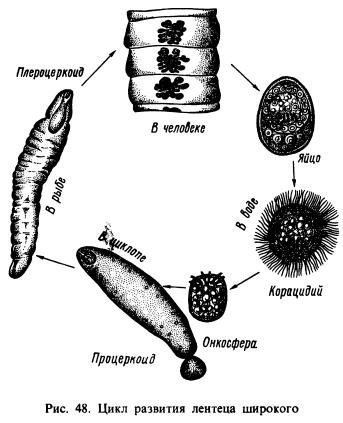Higher classification Eucestoda | Phylum Platyhelminthes Scientific name Pseudophyllidea Rank Order | |
 | ||
Lower classifications Spirometra, Ligula intestinalis, Sparganum proliferum, Diphyllobothrium, Schistocephalidae | ||
Pseudophyllid cestodes (order pseudophyllidea) are a kind of flatworm with multiple "segments" (proglottids) and two bothria or "sucking grooves" as adults. Proglottids are identifiably pseudophyllid as the genital pore and uterine pore are located on the mid-ventral surface, and the ovary is bilobed ("dumbbell-shaped").
Eggs have one flat end (the operculum) and a small knob on the other end. All pseudophyllid cestodes have a procercoid stage in their life cycle, and most also have a plerocercoid stage.
The most important family of pseudophyllid cestodes is Diphyllobothriidae, which infect mammals as their definitive hosts and use either copepods (a group of small crustaceans found in the sea and nearly every freshwater habitat, e.g. Spirometra) or both copepods and fish as in the broadfish tapeworm as intermediate hosts. The hermaphroditic Schistocephalus solidus parasitizes fish and fish-eating water birds, with a cyclopoid copepod as the first intermediate host.
When humans harbor plerocercoids of pseuddophyllidean cestodes outside the small intestine, it can cause sparaganosis.
